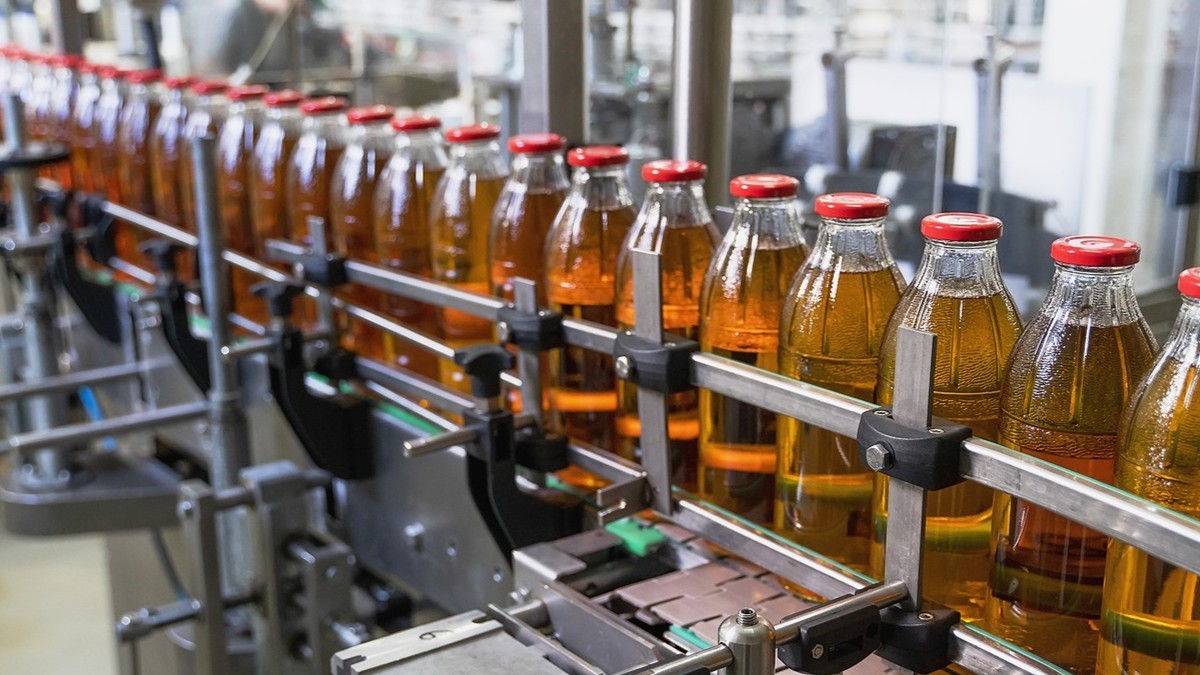The growth of the overall global biotech pharmaceutical market is slowing down. Europe and the United States have entered a mature period, and global development in the overall biotech pharmaceutical industry market has slowed down in recent years.
What Is Biotechnology Pharmaceutical?
Pharmaceutical Biotechnology is a rapidly expanding field focusing on the development and production of biopharmaceuticals that could lead to cures for many major diseases.
Current Status of the Biotechnology and Pharmaceutical Industry
With the many changes in the overall global environment, such as population changes, an aging society, lowering fertility rates, changes in medical treatment, an increase in the number of elderly-related disease, cancers in younger people, and the breakout of new infectious diseases, we are seeing an increase in medical expenditures and preventive medical demand in various countries.
Taiwan's pharmaceutical industry is listed by the government as a high-value-added industry that enhances the economy, hoping to create the next wave of new economic conditions in Taiwan. Looking at the development of Taiwan's pharmaceutical industry, under the active promotion of the government and the joint efforts of manufacturers in the industry, it has gradually accumulated energy to breakthrough technology, actively challenged the upgrading and transformation, and developed a new trend of creating value and looking internationally.
At the social /economic level, we see that the speed of urbanization, the transformation of lifestyles, the integration of economic regions, and the implementation of new laws and regulations will be accelerated. Future environmental changes and social changes will also affect the development trends of the global pharmaceutical industry.
Taiwan's pharmaceutical industry is listed by the government as a high-value-added industry that enhances the economy, and will hopefully create the next wave of economic opportunities in Taiwan. The development of Taiwan's pharmaceutical industry has been actively promoted by the government. The joint efforts of manufacturers in the industry have gradually led to breakthroughs in technology, and the development of new trends for creating value and expanding internationally.
The Market Scale of the Biotechnology Pharmaceutical Industry
The global pharmaceutical market will soon exceed 1 trillion U.S. dollars. In recent years, the global pharmaceutical market has maintained steady growth. Controlling medical and drug cost increases will become key factors in the development of the global pharmaceutical market.
The growth of the pharmaceutical market is mainly due to the substantial increase in the demand and supply of medical care in emerging markets such as India, China, Brazil, and Indonesia. The gap between the per capita use of drugs in emerging markets and developed markets has gradually narrowed, and the growth rate of pharmaceutical expenditures will also slow down. There are obvious changes, and price is also one of the driving forces for market growth. In the future, expensive new drugs for the treatment of cancer and other diseases will also become a factor in promoting market expansion. In terms of drug demand, the drug market in specialized fields focusing on the treatment of chronic diseases, rare diseases, and genetic diseases will gradually expand. With the policies of governments in various countries encouraging the use of generic drugs, the proportion of generic drugs in the global drug market has gradually increased. The importance of biopharmaceuticals to the global pharmaceutical market continues to increase, but it is worth noting the impact of biosimilar drugs on the biopharmaceutical market. It is expected that relatively cheap biosimilar drugs will be widely used due to the gradual completion of regulations and increasing acceptance of use. According to statistics, the output value of raw materials has grown relatively high, while western medicine preparations and biological medicines are still growing slowly. Affected by factors such as lower drug prices, inefficient development of new drugs, and intensified industrial competition, the biopharmaceutical industry continues to look for new directions for drug development, and the trend of innovative technology development and digital application introduction is still ongoing. From passive cooperation with smart drug development companies in the past, it has gradually transformed into a long-term, active relationship with drug companies that apply smart technology development, showing that smart drug development has gradually become an important tool for large companies to improve efficiency.
Major leading countries in the biopharmaceutical industry
In developed countries such as the United States, Europe, and Japan are the major markets for the biotechnology and pharmaceutical industry. Although they have high consumption power and have gradually recovered from the impact of the 2008 financial crash, the market has matured into a period of slower growth and the government has reduced overall medical spending. Future growth is estimated to remain stable about 4% to 5%.
In emerging markets such as India, China, Latin America, and other regions, due to the increasing income of the people, the gradual popularization of medical care, and the increase in medical expenditures, a large demand for medicines is developed. The overall annual compound growth rate is estimated to reach more than 10%. But among these emerging market countries, except for Brazil, Russia, India, and China, which have larger market scales, these countries have relatively small consumption, and their medical regulations and systems are not yet completely developed. Therefore, market-entry risks are relatively high.
Trends in the biotechnology pharmaceutical industry
High costs and transformation of multinational pharmaceutical companies. In addition to the aforementioned shift in market growth, large multinational pharmaceutical companies have faced problems such as rising R&D costs, and difficulty in getting approval of newly developed drugs for listing. The high profitability of going public and monopolizing the market with patents is no longer there. Once patents expire for original drugs, they lose their competitive advantage. After losing patent protection, reduced revenue or even sharp declines in demand result from face fierce competition from cheap generic drugs. To face the impact of emerging markets and industry transformations, major multinational pharmaceutical companies have started a series of mergers, acquisitions, and joint ventures in recent years.
Pharmaceutical Industry Chain
- Upstream in the pharmaceutical industry chain are the suppliers of raw materials. These include companies that provide services and materials such as chemical synthesis, natural plant extraction and purification, minerals, microorganisms, and related tissue cells, and gene transfer plants and animals.
- Midstream are suppliers of raw materials for traditional Chinese medicine and western medicine. The manufacturing process of raw materials is divided into natural substances through fermentation, cultivation, extraction, separation, and purification, and general chemicals through organic synthesis, separation, and purification.
- Downstream are the sales agents and distributors of Chinese and Western medicine preparations and drugs. The preparation process consists of processing raw materials, disintegrating powders, adhesives, and other preparation auxiliary materials, into convenient dosage forms.
Trends of the Pharmaceutical Industry
The rise of precision medicine has allowed for more specifical disease treatment which has improved the effectiveness of medical treatment. It is of great help in improving the efficiency of drug research and development which makes applying basic medical research to clinical treatment increasingly important.
Taiwan's pharmaceutical industry is gradually transforming, upgrading, and developing internationally: Although the size of Taiwan's pharmaceutical market has maintained a steady increase over the years, it has been affected by the price of health care and control drugs, which has reduced the growth rate of Taiwan's pharmaceutical market. Due to the continuous increase in domestic demand, and increased exports to international markets, the output value of the pharmaceutical industry has maintained steady growth over the years. As Taiwanese pharmaceutical companies continue to supply foreign markets, including the United States, Europe, Japan, and emerging markets, it will drive the steady growth of exports of western medicine preparations, bulk medicines, and medicine preparations.
Taiwan's pharmaceutical industry has been developing for more than 35 years, and the direction and development of the manufacturer-run movement has also undergone significant changes. In terms of product research and development, in recent years, Taiwanese pharmaceutical companies have actively focused on creating value as the core of product development. In addition to making progress in the clinical trial phase, encouraged by laws and regulations in the international market, many pharmaceutical companies have applied for fast review channels, to improve the company’s and product value. Expansion of the international market has accelerated, and obtaining quick review of breakthrough drugs and therapies has led to opportunities to launch niche products in the United States. In recent years, Taiwanese pharmaceutical companies have been actively going overseas to strengthen their international market strategy. Cooperating in development and foundry services as one of the main international strategic alliance models. Taiwanese manufacturers have gradually licensed their developed technologies and products to international pharmaceutical companies, by granting development contracts, etc. Mergers and acquisitions and the establishment of companies have also been important international layout strategies in recent years. To promote the development of the pharmaceutical industry, the globalization strategy and considering for market scaling is necessary. From the technical side, product side, the marketing side, it is important to establish close links with international pharmaceutical factories and channels. In the future, international licensing, strategic alliances, and mergers and acquisitions will continue to be the key development strategies of pharmaceutical companies. Under the continuous promotion and guidance of policies and the joint efforts of enterprises to enhance their strength, they will continue to drive and create value in the pharmaceutical industry and enhance international competitiveness.
Looking at the development of Taiwan's pharmaceutical industry from the global trend
Under the ever-changing global industrial environment, facing the wave of global industrial competition, it is necessary to adjust the development direction of related industries on time with international thinking. However, Taiwan’s pharmaceutical industry still lacks mechanisms/platforms for selecting marketable drugs or recreating the life cycle value of listed drugs for development in selected disease areas or product categories with market potential and lacks international patents and regulatory analysis. Taiwanese preparation manufacturers mainly develop generic drugs, which can help them grasp opportunities to expand into the international generic drug market. However, the international launch of products still needs to be followed up with pricing strategies and marketing channels. Taiwan’s pharmaceutical factories are small in scale and limited in resources, and cannot stand alone in the international market.
The rise of the digital economy and the maturity of big data analysis technology, combined with the establishment of patient and medical databases, will greatly change the future medical model. The pharmaceutical industry has opened a new door, and the business model that combines new biotechnology and pharmaceutical technologies with cross-border technologies/services has gradually become a trend. The era of precision medicine, accurate diagnosis, precision medication, and disease prevention is coming. It will bring new development opportunities, but corporate operation management, technology, and product and market innovation of Taiwanese pharmaceutical companies will need to be strengthened. Cross-field integration of innovative operating models can assist the pharmaceutical industry to accelerate its progress.




.jpg)








.jpg)
.jpg)